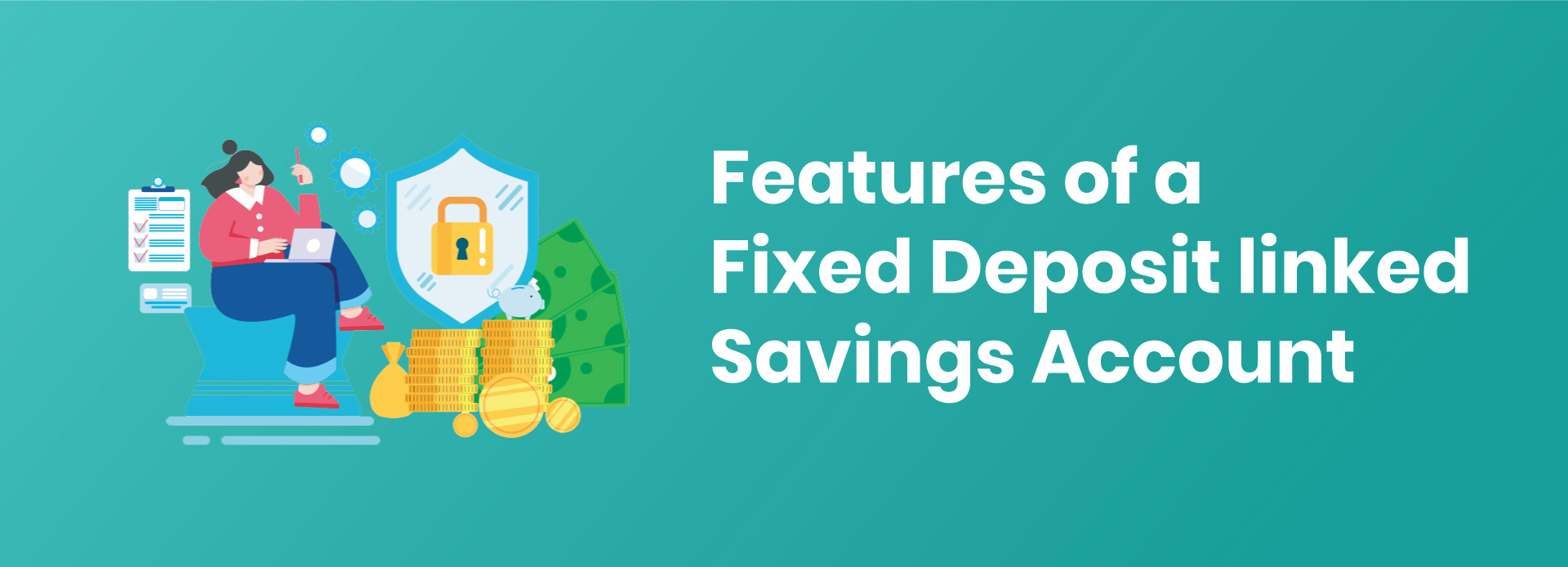
Features & Flexibility of a Fixed Deposit Linked Savings Account
21 June 2024 | By INDIE
Financial planning is crucial because it can help you achieve your financial goals and secure your future. While earning high returns on your investments is important it is also vital that you maintain liquidity. An FD-linked savings account can help you with that. FDs linked to savings accounts merge the flexibility of savings accounts with the higher interest rates of fixed deposits. Read further to explore the features and flexibility of a fixed deposit linked to a savings account and learn how it can be a viable investment option for your financial management.
Understanding the FD-Linked Savings Account:
A savings account linked to an FD is a unique hybrid account that offers the benefits of a fixed deposit and a savings account. You can earn higher interest rates by linking your savings account to a fixed deposit.
Also Read: Top 5 reasons to invest in a Fixed Deposit
Why Should You Consider a Fixed Deposit Linked to a Savings Account?
Here are a few advantages of a savings account linked to an FD:
● Interest Rates
High-interest rates are one of the salient features of FD-linked savings accounts. Linking your FD to your savings account can help you acquire wealth quicker because of the attractive interest rates. For instance, the IndusInd Indus Max Multiplier Savings Account attracts customers by offering competitive interest rates.
● Flexiblility
FD-linked savings accounts are flexible when it comes to accessing your funds, unlike other investment options. You can withdraw from your account whenever you need without redeeming your entire fixed deposit savings. That’s because only a part of your funds is in the FD. You conveniently manage your finances without compromising the interest on the fixed deposit amount.
● Tiered Interest Rates:
FD-linked savings accounts often have tiered interest rates, meaning a higher deposit earns attractive interest rates.
● Tenure Options:
There are numerous tenure options, ranging between a few months to a few years for FD-linked savings accounts. This flexibility can help you align your financial objectives with your investment period. Opt for a shorter tenure for your short-term goals. Conversely, choose a longer tenure for your long-term goals.
● Auto-Renewal:
FD-linked savings accounts generally have an auto-renewal feature just like regular fixed deposits. The linked fixed deposit is renewed automatically for the same tenure after maturity. Auto-renewal means your savings grow continuously without any interruptions. The auto-renewal feature makes savings accounts linked to FDs a hassle-free option.
● Safety and Security:
FD-linked savings accounts offer higher safety and security for your funds, unlike other investment options, which are subject to market fluctuations.
● Easy Access:
You can conveniently access your FD-linked savings account facilities because of the internet and mobile banking services. You can view transaction history, manage your funds at any time, and track your account balance regardless of time and location through the website or mobile apps.
Steps to Maximize Your Wealth with an FD-Linked Savings Account?
Maximize your wealth with the help of FD-linked savings accounts by following some of these steps:
➔ Define Your Goals:
Set your financial goals and try aligning them with your strategy. Define your goals, whether saving for a down payment or funding your child’s education. Setting specific financial goals can help you stay focused and motivated in your investment journey.
➔ Make Regular Deposits:
Deposit regularly to make the most of your FD-Linked Savings Account. Regular deposits can help you leverage the advantage of compounding and gradually grow your wealth.
➔ Review and Renew:
Check the interest rates of your FD-Linked Savings Account. Also, you should periodically review your account to keep track of your expenses and renew your FD to enjoy higher interest rates.
Fixed deposit-linked savings accounts balance out the flexibility and higher interest rates, which appeal to people seeking higher returns on their savings without risking liquidity.
Disclaimer: The information provided in this article is generic and for informational purposes only. It is not a substitute for specific advice in your circumstances. Hence, you are advised to consult your financial advisor before making any financial decision. IndusInd Bank Limited (IBL) does not influence the views of the author in any way. IBL and the author shall not be responsible for any direct/indirect loss or liability incurred by the reader for making any financial decisions based on the contents and information.




